If there’s one person who can turn a simple pantry ingredient into a global health trend, it’s Oprah Winfrey. From recommending books to sharing her favorite bread recipes, Oprah’s influence reaches millions. But what happens when she combines pink Himalayan salt with fermented sourdough? A culinary and wellness revolution might just be rising—literally and figuratively.
In recent years, Oprah’s pink salt trick has caught fire on social media, as she shared her take on flavor enhancement and mindful baking. Pink salt, long loved by wellness enthusiasts, suddenly became a hero ingredient not only for its exotic origins but also for the role it plays in perfecting sourdough bread. But is this just celebrity hype, or is there real science behind it?
Spoiler alert: It’s more than just good PR. Combining fermented sourdough with Himalayan pink salt may actually improve the bread’s digestibility, nutrient profile, flavor, and shelf life. In this article, we’ll unpack the “why” and “how” behind Oprah’s trick, digging into science, tradition, and home baking techniques. And yes, by the end, you’ll want to roll up your sleeves and bake a loaf yourself.
Oprah’s love for artisanal bread has led many to explore creative ways to incorporate wellness elements into traditional recipes. While the pink salt trick is typically consumed as a morning drink, using Himalayan pink salt in sourdough baking offers another way to enjoy the mineral-rich benefits of this prized salt. This approach combines Oprah’s passion for quality bread with the growing interest in functional ingredients.
Let’s dive into the delicious details.
Understanding Pink Himalayan Salt: Is It Really Special?
What Is Pink Salt and Where Does It Come From?
Pink Himalayan salt isn’t just pink for fun—it gets its delicate rose color from trace minerals like iron, magnesium, calcium, and potassium. This natural salt is mined from ancient sea beds buried deep within the Himalayan Mountains, particularly in the Khewra Salt Mine in Pakistan, one of the oldest and largest salt mines in the world.
Unlike refined table salt, which undergoes heavy processing, Himalayan salt is hand-mined and minimally processed, meaning its natural mineral profile remains intact. That’s a big part of its appeal—especially to health-conscious eaters and bakers looking for clean, unrefined ingredients.
Nutritional and Mineral Content Compared to Table Salt
So, how does pink salt actually stack up against your regular kitchen salt?
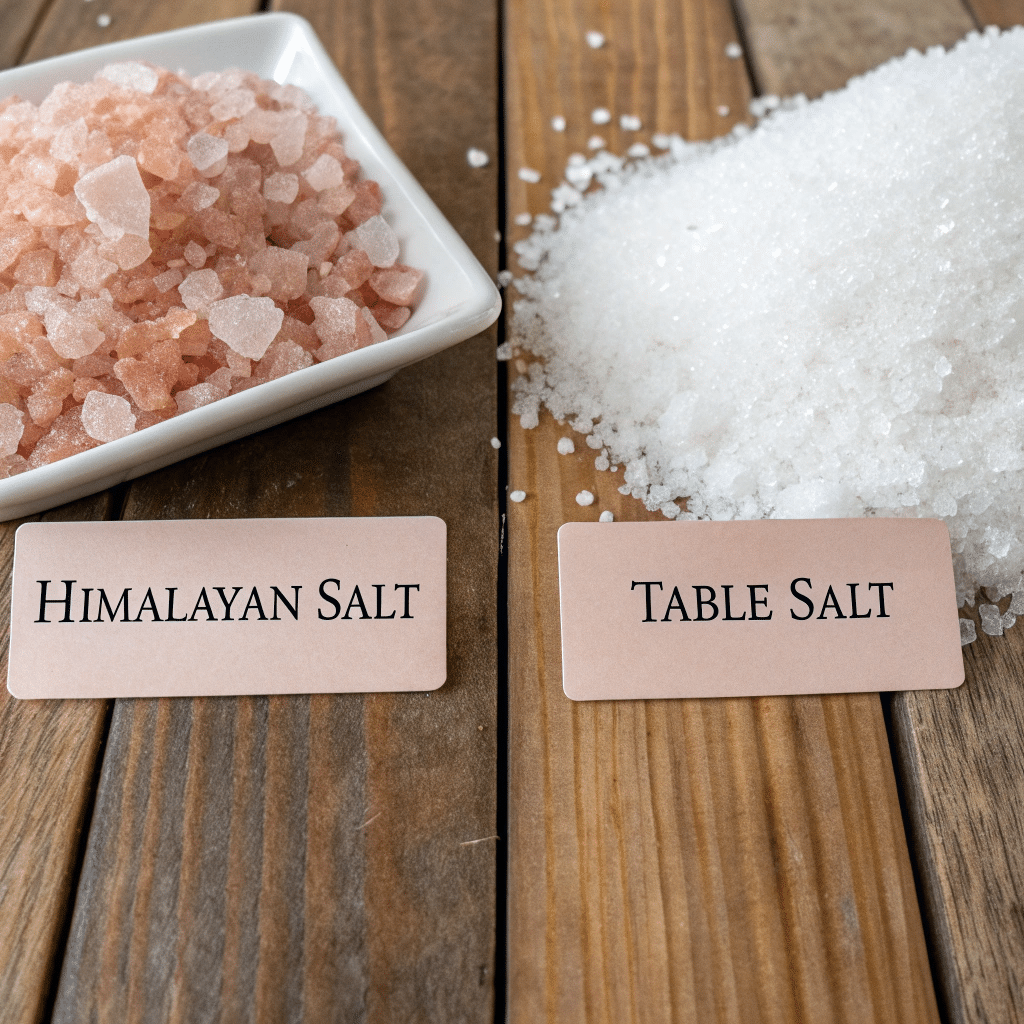
Here’s a quick comparison table to make it easy:
| Nutrient / Property | Pink Himalayan Salt (per gram) | Table Salt (per gram) |
|---|---|---|
| Sodium | ~368 mg | ~393 mg |
| Potassium | ~2.8 mg | 0 mg |
| Calcium | ~1.6 mg | 0.4 mg |
| Magnesium | ~1.06 mg | Trace |
| Iron | ~0.03 mg | Trace |
| Additives (anti-caking, etc.) | None (natural form) | Yes (may include aluminum or dextrose) |
| Iodine | None (unless fortified) | Yes (iodized) |
| Color and Texture | Pink, coarse to fine | White, fine |
🔍 Key Takeaway: Pink Himalayan salt contains over 84 trace minerals, which not only offer nutritional benefits but may also contribute to improved taste and fermentation behavior in sourdough.
Benefits of Using Pink Salt in Cooking and Baking
Pink salt’s appeal goes beyond aesthetics and wellness hype. It actually offers functional advantages when used in recipes like sourdough.
Let’s break down the most relevant benefits:
Detoxifying Properties
Pink salt contains negative ions, which are believed to help draw toxins out of the body and promote better pH balance. While this is still debated in the scientific community, many natural health advocates swear by its cleansing effects—especially when consumed in moderation.
Electrolyte Support and Hydration Benefits
Because of its natural potassium, calcium, and magnesium content, pink salt may help regulate hydration and fluid balance—especially important for those on low-carb or fermented food diets where electrolyte loss can be a concern.
For sourdough baking, this electrolyte content may have indirect benefits:
- Stronger gluten development
- Slower fermentation for deeper flavor
- Improved enzyme activity in wild yeasts and bacteria
Fermented Sourdough Explained
The Science Behind Sourdough Fermentation
Sourdough isn’t your average loaf of bread. It’s an ancient form of baking that relies on natural fermentation using wild yeasts and lactic acid bacteria (LAB) instead of commercial yeast. This fermentation process not only causes the dough to rise but also breaks down gluten and phytic acid, unlocking more nutrients and creating that signature tangy flavor.
Here’s how it works:
- Flour + Water + Time = Starter
The base of sourdough is the starter, a live culture of flour and water teeming with wild yeast and bacteria. - Fermentation Phase
As the bacteria and yeast digest the sugars in the flour, they release carbon dioxide, lactic acid, and acetic acid—these create the bubbles, the flavor, and the airy crumb of the bread. - Final Rise (Proofing)
The dough rests and expands, typically over hours or overnight, before it’s shaped and baked.
What makes sourdough stand out isn’t just the process—it’s the health advantages that come from fermentation.
Health Benefits: Gut Health, Blood Sugar, and Digestion
Sourdough isn’t just delicious—it’s nutritional powerhouse bread. And if you’re trying to eat clean or optimize your gut health, it may be the best bread you can choose.
Why Sourdough Is Easier to Digest Than Other Breads
Many people who can’t tolerate commercial bread say they do just fine with sourdough. Here’s why:
| Factor | Commercial Bread | Sourdough Bread |
|---|---|---|
| Leavening Agent | Commercial yeast | Wild yeast & lactic acid bacteria |
| Fermentation Time | 1–2 hours | 12–48 hours |
| Gluten Breakdown | Minimal | Moderate to significant |
| Preservatives/Additives | Often included | None (traditional sourdough) |
| Digestive Tolerance | Lower | Higher (easier on sensitive stomachs) |
Pairing sourdough with mineral-rich pink salt enhances both the digestibility and the flavor profile, giving the bread more depth and complexity while still being gentle on your system.
The connection between sourdough baking and wellness practices like the pink salt trick lies in the intentional use of natural, unprocessed ingredients. Just as the morning salt water ritual focuses on pure Himalayan pink salt, incorporating this same high-quality salt into sourdough bread extends that commitment to natural wellness throughout your daily meals. Both practices reflect a mindful approach to nutrition that Oprah has long advocated.
The Perfect Match: Pink Salt Meets Sourdough
Why Pink Salt Enhances the Flavor of Fermented Dough

When it comes to baking sourdough, salt isn’t just a seasoning—it’s a functional ingredient that controls fermentation, strengthens gluten, and defines the final flavor. So when Oprah recommends pink Himalayan salt, she’s not just making a fancy swap; she’s elevating the overall experience.
But why does pink salt pair so well with fermented sourdough?
Here are a few reasons:
- Flavor complexity: Pink salt’s natural mineral content adds a subtle earthiness and depth of flavor that regular salt lacks. In sourdough, where flavor depends heavily on fermentation, this extra nuance amplifies the sour, nutty tones.
- Mineral balance: The trace minerals (magnesium, calcium, potassium) can subtly influence the behavior of lactic acid bacteria, contributing to a more balanced, less sharp acidity.
- No harsh additives: Regular salt often includes anti-caking agents and sometimes sugar (dextrose), which can interfere with fermentation. Pink salt is pure and natural, supporting a cleaner ferment.
In a way, pink salt is like a gourmet jazz band—it doesn’t overpower the dough, but it adds richness, smoothness, and layers.
How Minerals in Salt Affect Fermentation Reactions
Salt has always played a key role in fermentation. It slows down yeast activity, tightens gluten strands, and enhances enzymatic reactions—but when you throw pink Himalayan salt into the mix, you’re also introducing beneficial trace elements that may subtly shift the microbial balance in a good way.
Let’s break it down:
| Mineral in Pink Salt | Possible Role in Fermentation |
|---|---|
| Magnesium | Supports enzyme activation and may enhance flavor maturity |
| Calcium | Strengthens dough and improves gas retention |
| Potassium | Helps maintain pH balance, supporting healthy bacterial growth |
| Iron | May support microbial activity and flavor development |
While these impacts are subtle and not as heavily researched as basic salt effects, many artisan bakers report noticeably smoother fermentation and richer flavor when using pink salt.
Oprah’s Twist: Timing the Salt for Best Results
Now here’s where Oprah’s approach gets really smart—she adds the pink salt partway through the process, not at the very beginning. This isn’t just a personal quirk—it’s backed by baking science.
When you delay adding salt, you allow:
- Gluten to develop freely
- Yeast and bacteria to activate more rapidly
- Improved dough elasticity
Once the structure is formed, adding salt (especially pink salt) tightens gluten strands, giving the dough a firmer, stretchier texture without stunting the rise.
Pre-Fermentation vs. Post-Fermentation Salt Addition
Here’s a quick look at the difference:
| Salt Timing | Effect on Dough |
|---|---|
| Added at Start | Slower fermentation, tighter gluten early on |
| Added After Autolyse (Oprah’s Trick) | Maximizes enzymatic activity, allows better gluten development |
| Added Too Late | Uneven salt distribution, may affect flavor consistency |
This method is often referred to as “delayed salt” or “bassinet salting” in professional baking circles—and it’s especially helpful when working with wild starters, which need more room to breathe in early fermentation stages.
Salt Brine or Dry Salt: Which Works Best?
While Oprah prefers coarse dry pink salt, some bakers also experiment with salt brine (aka salt slurry) for more even mixing. Here’s a quick comparison:
| Form | Pros | Cons |
|---|---|---|
| Dry Pink Salt | Simple, natural texture, strong mineral kick | May clump if not incorporated properly |
| Pink Salt Brine | Even distribution, gentler fermentation impact | Requires extra prep step, slightly dilutes dough |
For most home bakers, coarse dry pink salt (like Oprah uses) is both easy and effective.
Visual Summary: Benefits of the Oprah Pink Salt + Sourdough Combo
| Benefit Category | Impact of the Combo |
|---|---|
| Flavor | Deeper, richer taste with earthy, mineral-forward notes |
| Fermentation | Enhanced microbial balance and improved gluten development |
| Digestibility | Easier on the gut, less bloating, reduced phytic acid |
| Nutrition | Trace minerals like magnesium, calcium, potassium preserved |
| Baking Technique | Delayed salt addition creates more stretchable, airy dough |
Making Your Own Pink Salt Sourdough at Home
Step-by-Step Recipe: Oprah-Inspired Sourdough Loaf
Ready to channel your inner Oprah and bake something wholesome, tangy, and mineral-rich? Here’s a simplified version of her pink salt sourdough technique.
Ingredients
- 500g organic bread flour
- 350g filtered water (lukewarm)
- 100g active sourdough starter (fed within 6–8 hours)
- 10g pink Himalayan salt (coarse or fine)
🧰 Tools:
- Mixing bowl
- Dutch oven
- Bench scraper
- Proofing basket
- Kitchen scale
- Tea towel or parchment paper
Instructions
- Autolyse (0:00)
- Mix flour and water until shaggy.
- Let rest for 1 hour to hydrate.
-
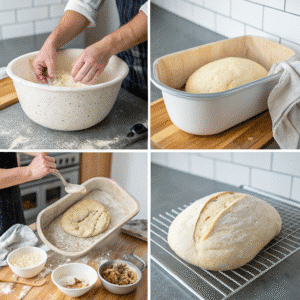
How to make Oprah’s sourdough loaf at home - Add Starter (1:00)
- Mix in the active sourdough starter using wet hands.
- Cover and rest for 30 minutes.
- Add Pink Salt (1:30)
- Sprinkle in pink salt and knead until fully incorporated.
- Cover and rest.
- Bulk Fermentation (2:00–6:00)
- Perform 4–5 stretch-and-folds every 30 minutes.
- Allow dough to rise until 70% bigger.
- Pre-shape and Rest (6:30)
- Turn dough onto a floured surface, gently shape, and let rest 20 minutes.
- Final Shape and Cold Proof (7:00–7:30)
- Shape into a boule or batard. Place into a floured basket.
- Cover and refrigerate overnight (12–14 hours).
- Bake (Next Morning)
- Preheat oven to 475°F / 245°C with Dutch oven inside.
- Score your loaf, bake 20 minutes covered, 20 minutes uncovered.
- Enjoy your Oprah-style loaf with some olive oil, nut butter, or just a slab of real butter.
Notes
Using pink salt isn’t difficult, but here are a few pitfalls to dodge:
- ❌ Using iodized pink salt – It’s rare, but check the label to avoid unnecessary additives.
- ❌ Adding salt too early – Let your gluten and fermentation breathe first.
- ❌ Overbaking – You’ll lose beneficial fermentation properties and flavor complexity.
- ❌ Under-hydrating the dough – Pink salt can absorb more water than table salt; adjust hydration if needed.
- ❌ Skipping the cold proof – This overnight rest is crucial for complex flavor and structure.
FAQs: Oprah, Pink Salt, and Fermentation
What does Oprah use pink salt for besides sourdough?
She also uses it for seasoning roasted veggies, homemade salad dressings, and even as a bath soak for relaxation.
Can I use regular salt instead of pink salt?
Yes, but you’ll miss out on the mineral profile and subtle flavor benefits. For Oprah’s results, go pink.
Is pink salt really healthier than sea salt?
Pink salt contains more trace minerals, but the health difference is modest. The key is its purity and lack of additives.
Does salt kill sourdough starter?
Not if used correctly. High concentrations can slow it down, but proper timing (like Oprah’s method) avoids issues.
How long should you ferment sourdough with pink salt?
Bulk fermentation typically lasts 4–6 hours at room temp, followed by 12–14 hours in the fridge. Salt doesn’t affect timing drastically.
Where can I buy Oprah-approved pink salt?
Look for coarse pink Himalayan salt at health stores, Whole Foods, or online retailers. Popular brands include Sherpa Pink and The Spice Lab.
Conclusion: Is Oprah Onto Something Deliciously Healthy?
The verdict is in: Oprah’s pink salt trick isn’t just hype—it’s smart, flavorful, and backed by science and tradition.
Combining fermented sourdough with Himalayan pink salt:
- Unlocks richer taste
- Supports gut health
- Avoids unnecessary additives
- Honors ancient culinary practices with a modern twist
And with her timing trick—adding salt after autolyse—you’re getting a loaf that’s lighter, tastier, and better for your body.
So whether you’re a wellness warrior, a foodie, or just love Oprah, this is one bread trend that’s worth baking into your routine.

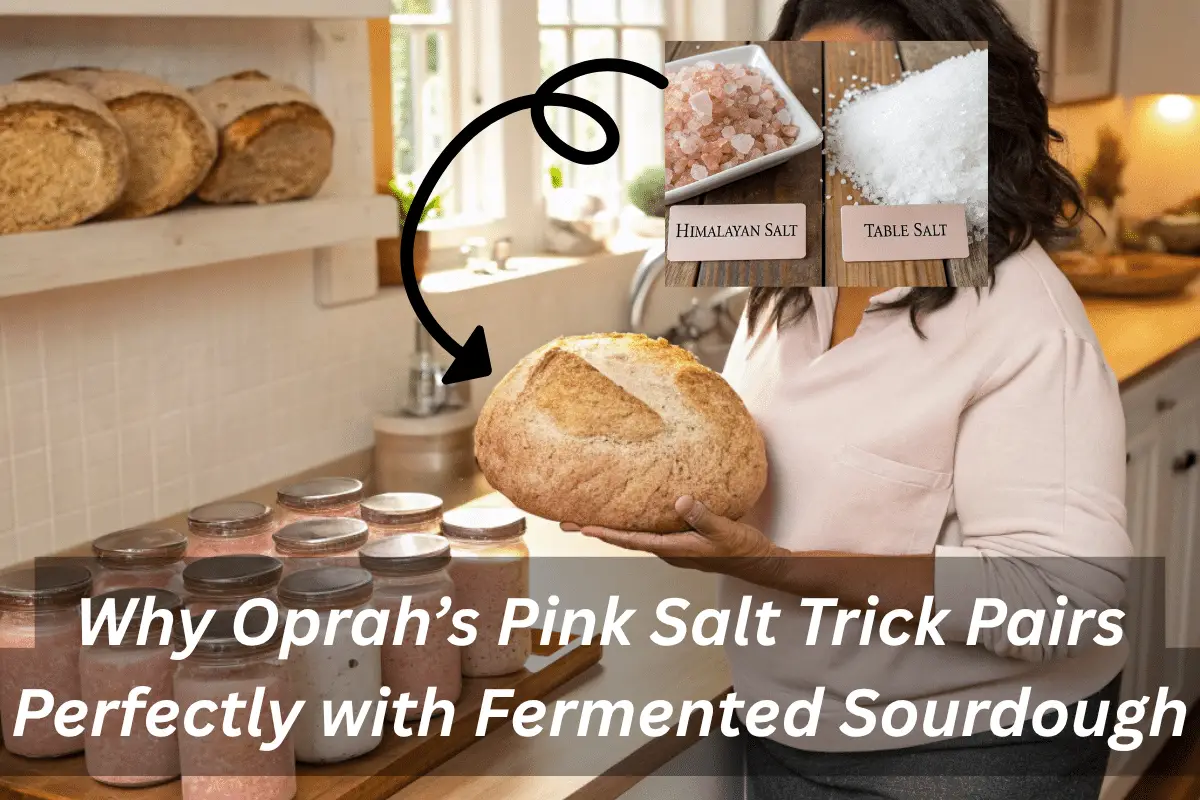
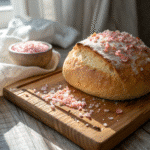
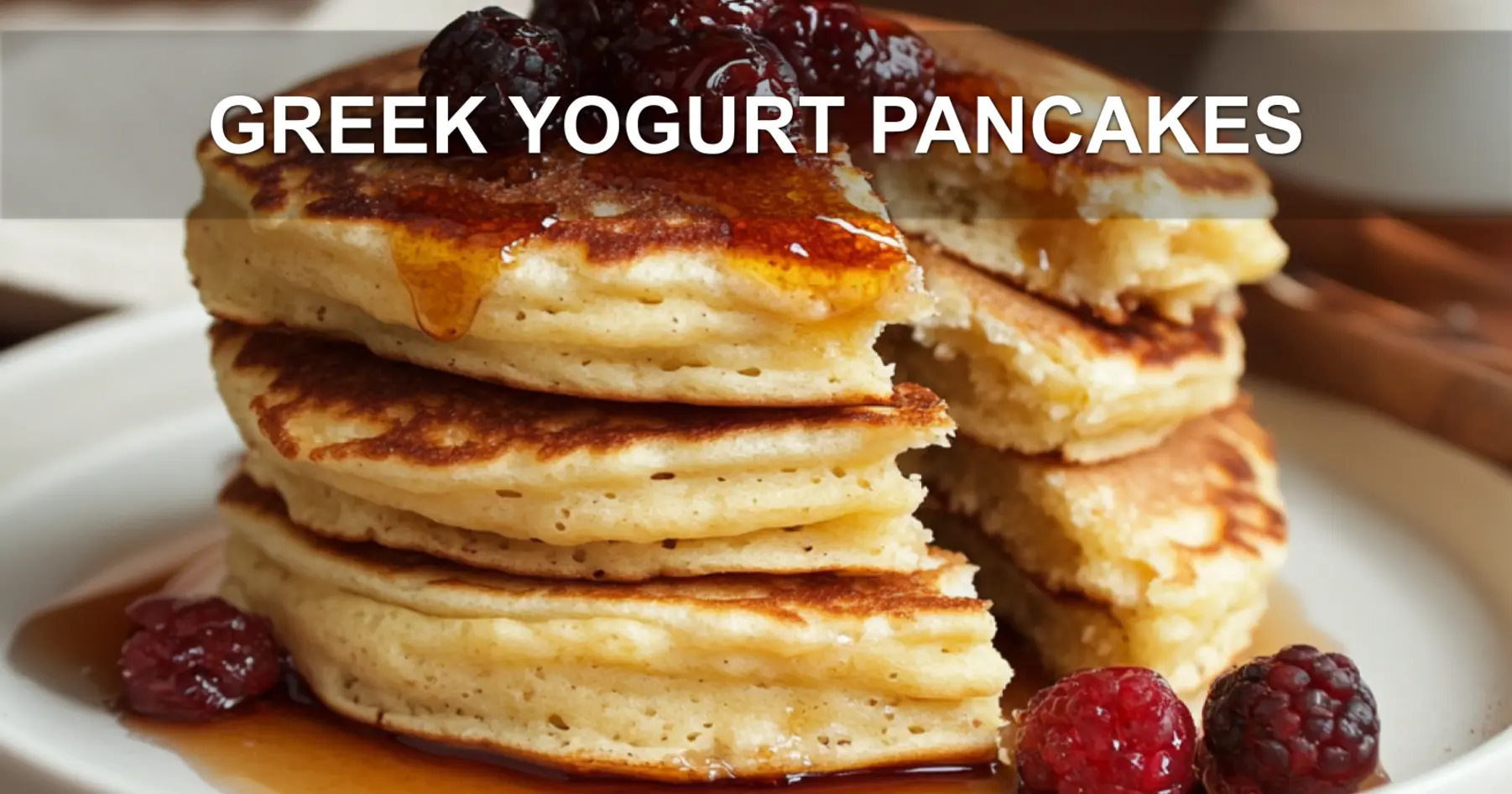

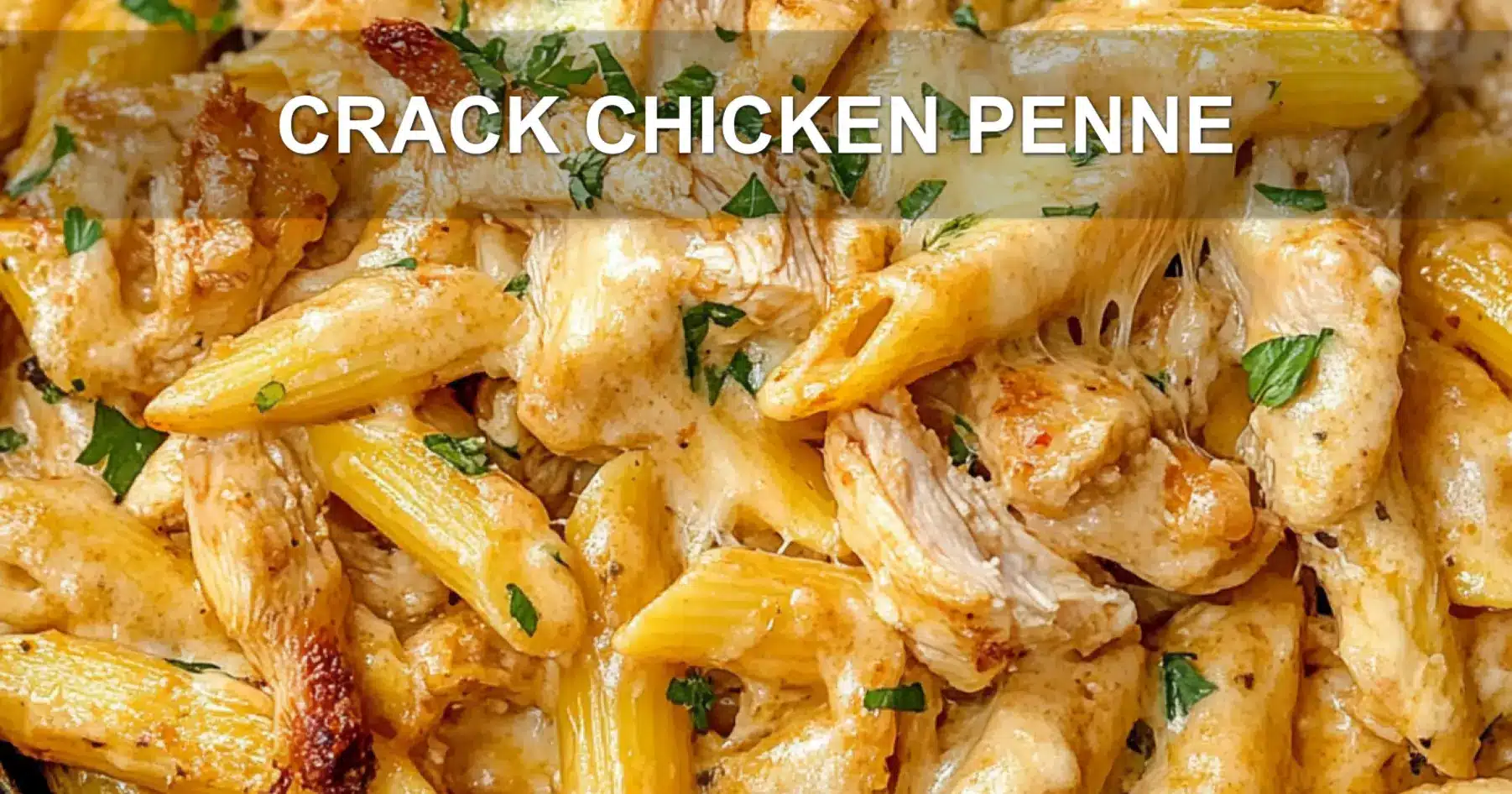


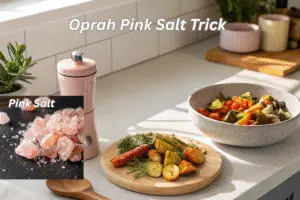
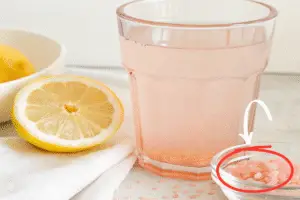
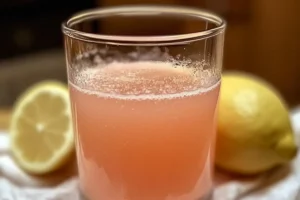

4 thoughts on “Why Oprah’s Pink Salt Trick Pairs Perfectly with Fermented Sourdough”